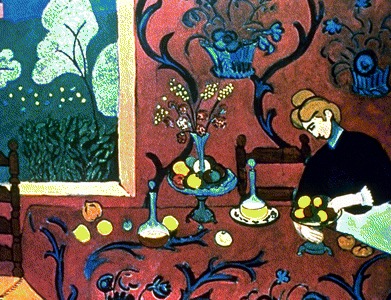

|
| |||||||||||||||||||||||||||||||||||||||||||||||||||||||||||
|
|||||||||||||||||||||||||||||||||||||||||||||||||||||||||||
|
| |||||||||||||||||||||||||||||||||||||||||||||||||||||||||||

Welcome to the World of DesignDesign! Where would the modern world be without designers like Raymond Lowe—or Henri Matisse, for that matter, who was famed for his artistic design skills? On these pages, The Muse Of Fine Arts explores and relishes their world. About this feature
Don't let this glancing reference to Matisse throw you off—Matisse is about Fine Art. Design, which The Muse is exploring here, is one of his strengths and a distinguishing characteristic of his work, but not his principal occupation. This feature is not about people like Matisse or about art objects of the kind Matisse produced. It's not about great paintings of the kind Matisse is famous for, or indeed about great art or fine art per se. Rather, it's about a different kind of art, one that The Muse Of Fine Arts calls not so fine—visual art that is typically produced as an output of industrial or commercial artistic activity, art that consists of decorative art objects like posters, drawings, commercial graphics, paintings, sculptures, photos, and architecture. about designThis is where the subject of design comes in—Design with a capital "D," that is. Design is the aesthetic element from which this feature takes its inspiration. What is design? Whether in the Fine Arts or the not so fine visual arts, to design is to make drawings, preliminary sketches, or plans; to plan and fashion the form and structure of an object, work of art, decorative scheme, or the like.
As an object or thing, a design is an outline, sketch, or plan, as of the form and structure of a work of art, an edifice, or a machine to be executed or constructed; it's an organization or structure of formal elements in a work of art or composition; it's the combination of details or features of a picture, building, etc. In a graphic context, a design is the pattern or motif of artistic work. AvailabilityEvery great or important industrial or commercial design has had a unique life and personality of its own. The same is true for architectural works, flags, religious symbols, and other pragmatic works of visual art. theysprang out of the circumstances surrounding them, out of the lives of the designers who gave it birth.
The Muse Of Fine Arts will publish photo galleries of successful and popular industrial and commercial designs, building designs, and symbols in such a way as to enable visitors to examine, analyze, and compare their births and deaths, features, and other salient characteristics. Gallery information will include the designer's name and story (if any), name and story of the work, time period, and museum or other location where displayed (if any). Other features in these pages will elucidate the history and development of the industrial and graphic design arts and architecture, design movements; techniques; methods and materials; biographies of famous and important designers and architects, and assessments of their lives and works. There will be descriptions of graphic symbols and of the cultures that gave them birth. Look for these and other features on future visits to these pages. ...Coming.
the Fine Arts GlossaryThe Muse Of Fine Arts is pleased to offer this automated glossary of fine arts terminology. It's a bounty of basic information about the fine arts which it presents in a simple, direct, and clear manner. It contains over 500 important terms drawn from a variety of the fine arts, with definitions that are packed with interesting and informative content.
technical aspects of the fine artsIn their classical definition, the fields of fine art are primarily visual; they include painting, sculpture, drawing, watercolor, graphics, and architecture. Yet today there are more kinds of fine art than every before, many of which mitigate or completely dissolve barriers that in the past restricted the sensory appeal of fine art to the eyes at the expense of the other four senses.
ETAF Recommends...Coming.
Search this web site with Electricka's Search Tool:
tap or click here
Electricka's Theme Products
Shop At Cafe Press
This web site and
its contents are copyrighted by
Decision Consulting Incorporated (DCI).
All rights reserved. |
| ||||||||||||||||||||||||||||||||||||||||||||||||||||||||||